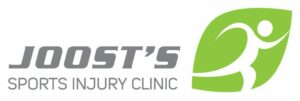Healing meniscus and cartilage damage without surgery
The meniscus is a C-shaped structure made of cartilage located in the knee. It protects the knee by providing shock absorption and helps lubricate the knee for smoother movement. A tear in the meniscus is a common occurrence, especially for athletes who may repeatedly twist the knee or over-flex it. This could occur when receiving or executing a kick or leg block in martial arts training or sparring, dribbling a basketball around an opponent, getting studs or cleats caught when turning suddenly in football, rugby or hockey or turning to hit a tennis ball. These sport injuries can break down the cartilage which cushions the ends of the bones from rubbing against each other.
Poor blood circulation around the meniscus reduces its ability to heal itself and because it is also located in such an active joint (the knee) this can also slow down the healing process. In western medicine, doctors generally recommend that the best treatment for meniscus and cartilage damage is surgery, because the process is quick, keyhole surgery is now a much simpler options than back in the day when they had to “slice and dice”, however undergoing surgery doesn’t necessarily mean the damage will heal 100% and not recur. Meniscus tears may fail to heal, repairs may also fail, new tears may develop; all of which could mean more scar tissue, a repeat operation and further structural deterioration.
According to Traditional Chinese Medicine there are alternatives and non-surgical solutions to treat meniscus and cartilage damage. Practitioners view these damages as trauma to the local ‘Qi’ (translated as the flow of energy in the body) and ‘blood stagnation’ (deficiencies in the blood that cause disharmony in the body). The ‘Qi’ and blood have an interdependent relationship because ‘Qi’ moves the blood, and blood nourishes ‘Qi’ production and essentially in all injuries and healing, blood is the healing component.
In Martial chinese medicine the central treatment of choice is Moxibustion. I use the term “central” as there are other supporting treatment factors which potentiate the Moxibustion such as the use of herbal poultices and “deep tissue effleurage”. Moxibustion, or the use of burning Moxa, has been used by Chinese medicine specialists for thousands of years. Moxibustion may be of assistance to decrease inflammation, encourage better circulation and improve range of movement. Therapists use moxa to warm regions and points in the body with the intention of stimulating circulation – hence it is also referred to as ‘Directional Heat Therapy”- and inducing a smoother flow of blood and ‘Qi’. Most people describe the feeling of the treatment as a calm, warming sensation that helps them to feel comfortable and relaxed.
There are several methods of moxibustion. The traditional way of using moxa is where the practitioner places a moxa stick, roughly the shape and size of a cigar, over (approx 1-2cms above the skin) the injury and surrounding damaged tissue. The patient will experience a pleasant heating sensation that penetrates deep into the skin, but should not experience any pain, blistering or scarring. The stimulated circulation and specialized palpation helps remove damaged tissue.
The duration for moxibustion treatment can depend on a number of factors, including age, physical activity, the circumstances leading to the damage, the consistency of the injury and time elapsed between initial sessions. With the help of rest, elevation and physical therapy, moxibustion can help heal the body without surgery.
You can learn more about Traditional Chinese Medicine and moxibustion at Joost’s Sports Injury Clinic, where creating a life without pain is attainable. Don’t let sport injuries, such as damage to the knee keep you from enjoying life and living life to the fullest.

